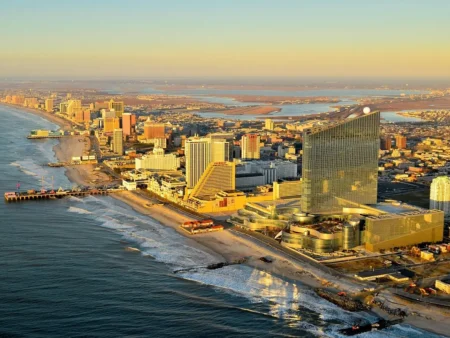

New York issued four gaming operators with casino licenses. But, they didn’t meet the state’s lawmakers’ financial expectations despite operating for several years.
Thomas DiNapoli, New York Comptroller, assessed the del Lago Resort and Casino, Rivers Casino and Resort, Resorts World Catskills, and Tioga Downs Casino’s performance between 2017 and 2022. He discovered that the casinos made less gross gaming revenue than what was anticipated.
The state levies taxes on the revenue. Still, the gaming operators’ tax and revenue contributions were below the lawmakers’ forecasts since they have a loss trend. The comptroller’s report cautions local communities from heavily depending on the casinos’ revenue.
New Yorkers voted in a constitutional amendment in 2013 that allowed the state to issue seven commercial casino licenses. The New York Gaming Facility Location Board gave out four gaming licenses in the upstate region. It intended to give the four casinos a seven-year period to operate before issuing three more downstate casino licenses.
Even so, the location board opened a license applications window in January 2023. This is a major reason why it is keenly reviewing the four casinos’ contributions to the local government’s revenue.
More About the Comptroller’s Study
The comptroller assessed the four gaming properties’ initial 2019 projections in 2020 and compared them to the tax revenue they generated. His office discovered that they failed to reach the gross revenue estimates that the lawmakers had made.
New York levies taxes on such revenues. Still, DiNapoli added that the casinos’ tax and contributions and revenues were only about 60 percent of the predictions during the three years. None of the casinos which got gaming permits in 2015 and 2016 reached the 2019 tax distributions.
Even so, Tioga Downs in the Southern Tier was an exception. The report further revealed that the operators’ gross gaming revenue improved in 2022. But New York’s policy measures greatly reduced the revenue that the casinos made from electronic table games, slots, and in-house sports gambling.
Their gaming tax distributions were almost $176 million between 2017 and 2022. Broome County received $4 million, the highest gaming tax revenue, despite lacking a gaming site. Casino taxes largely affected the economy of the three small towns that reduced their real property taxes.
The comptroller’s report highlighted some concerns for local governments. It revealed that the gaming operators’ gross gaming revenues in 2022 surpassed what they generated before the Coronavirus pandemic.
Even so, the high revenues didn’t increase local gaming taxes since the amended gaming regulation gave casinos the mandate to retain a large share of gross revenues.
DiNapoli referred to an article that Spectrum News 1 published saying that casinos aren’t solution providers for communities’ challenges. So, the impact of their gaming tax revenue varies among various communities.
Even so, the comptroller hoped that his findings would guide local and state officials on how they can aid casinos’ host communities to avoid some economic pitfalls. Moreover, it will prevent the public from having misguided expectations about how casinos will benefit them.
Three Towns Benefited from the Gaming Companies
The report had a positive revelation. It showed that Nichols, Trye, and Thompson towns benefited from the casinos’ operations since their gaming tax revenue constituted between 30 and 60 percent of their total revenue.
DiNapoli said that this greatly helped them cut some taxes. For instance, Schenectady, the biggest host city, and the host counties got only one to three percent of their total revenue from gaming tax.
New York retains 80 percent of gaming taxes and gives local governments 20 percent. Then, host communities received 10 percent of the taxes, which the host county and host city or town share equally.
Last Updated on by Ryan











